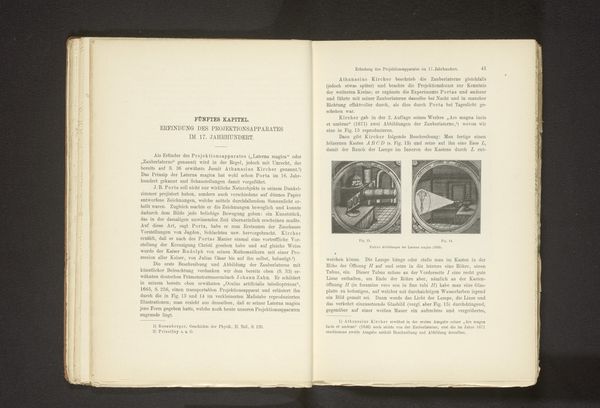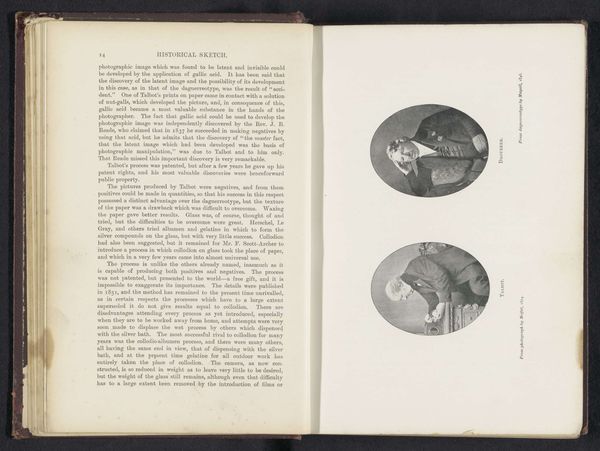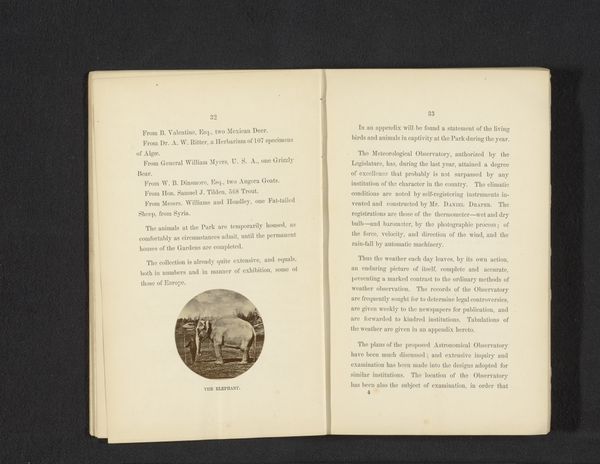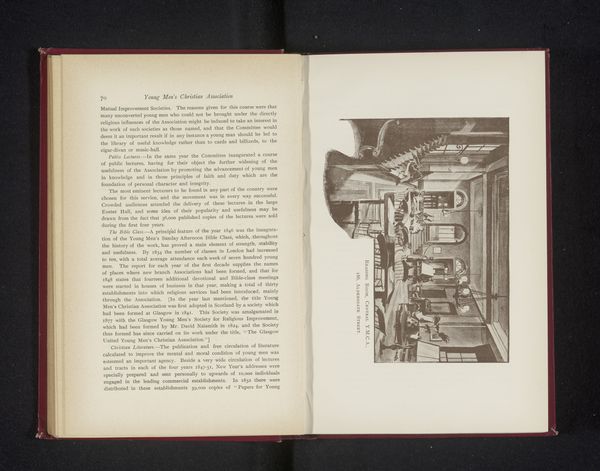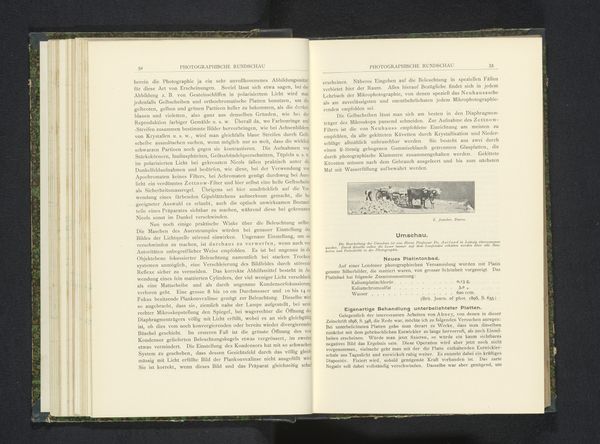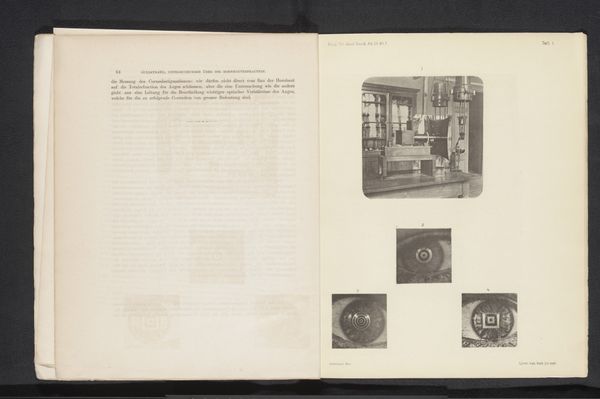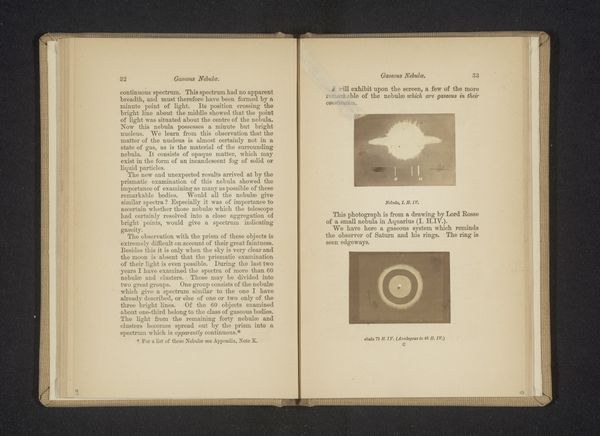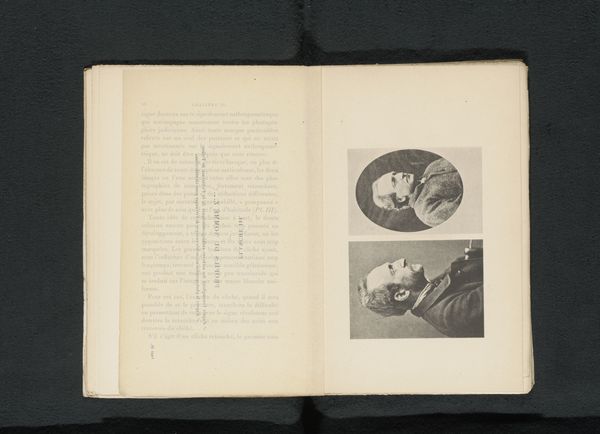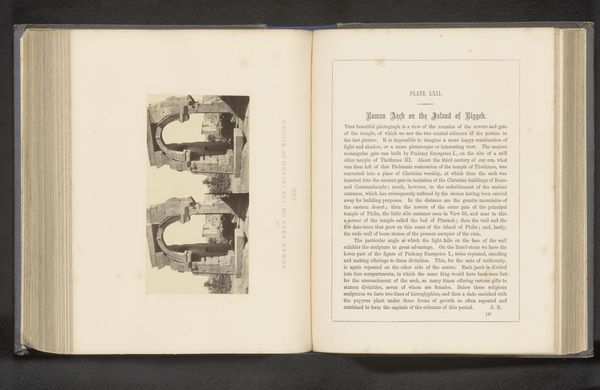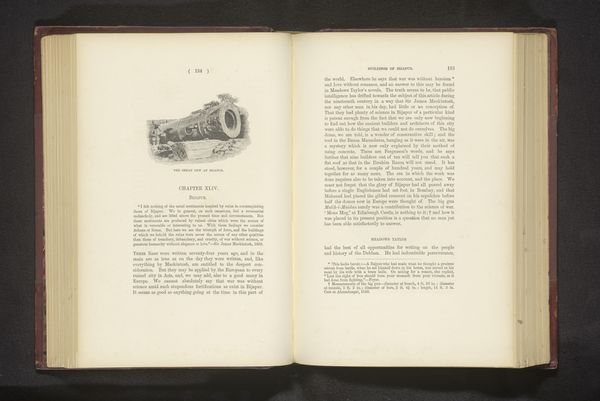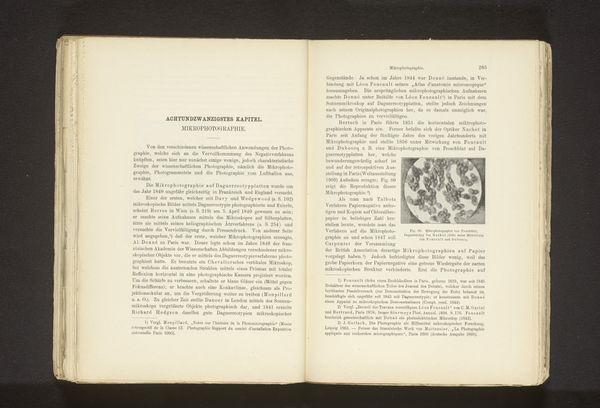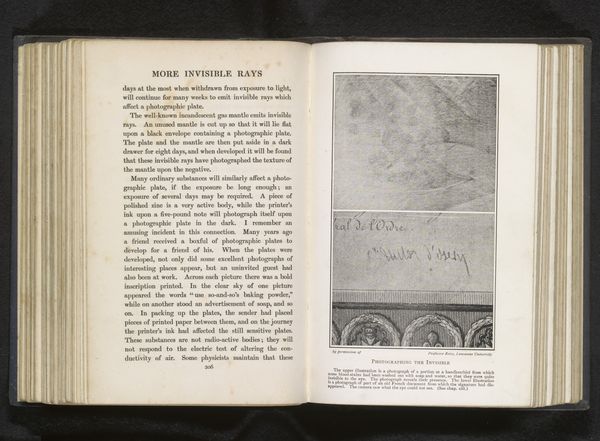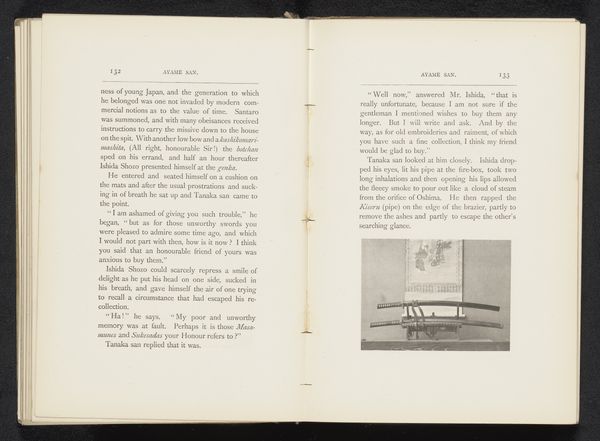
print, photography, photomontage
# print
#
french
#
book
#
photography
#
photomontage
Dimensions: height 60 mm, width 80 mm
Copyright: Rijks Museum: Open Domain
Curator: This open book displays a photomontage entitled "Koffer met daarboven de tekst Express Detective Nadar," or "Suitcase with the text Express Detective Nadar Above," attributed to Nadar, created before 1893. It's a photographic print now held at the Rijksmuseum. The print on the page features an image of a suitcase centered within emanating light rays. It strikes me as incredibly whimsical. What do you think? Editor: I find it interesting how the text becomes part of the art itself, literally built on top of the suitcase image. The combination is humorous, playing on anxieties about surveillance and detection through new technology like photography. Curator: Right, the suitcase as a metaphor becomes laden with implications, not merely for travel, but as a carrier of secrets, perhaps illicit ones considering Nadar’s cultural position. It certainly speaks to a broader narrative about identity and surveillance during that era. Editor: I agree, consider also the rising prominence of the middle class, and an emerging popular appetite for narratives about detective work that romanticize ideas of power, danger, and the unraveling of truth—all through these new systems of social and scientific control. How do such institutions intersect? The suitcase suggests they all condense into this everyday, utilitarian form. Curator: Exactly. Looking closer, the radiant beams around the suitcase remind me of halos in religious iconography, perhaps imbuing it with a sense of importance. Even in the 19th century there were efforts to depict capitalism itself as a religion or system of power, and Nadar seems aware of the symbolic potential. Editor: That's an astute reading, it makes one wonder about the role that this image might have played within print culture—did this image invite commentary or did it act as one itself? Were popular sentiments of the time already turning cynical about these innovations, casting suspicion on the "progress" they promised? Curator: Definitely, considering Nadar’s active involvement with social critique and satirical magazines, I'm tempted to frame this piece within a broader cultural context, viewing it not just as a singular object, but a voice contributing to that growing discussion. Editor: A fitting reminder, perhaps, that even seemingly straightforward imagery contains complex narratives awaiting exploration. Curator: Precisely, artwork like this compels us to reassess the perceived neutrality of visual representation and re-examine those embedded cultural biases.
Comments
No comments
Be the first to comment and join the conversation on the ultimate creative platform.
